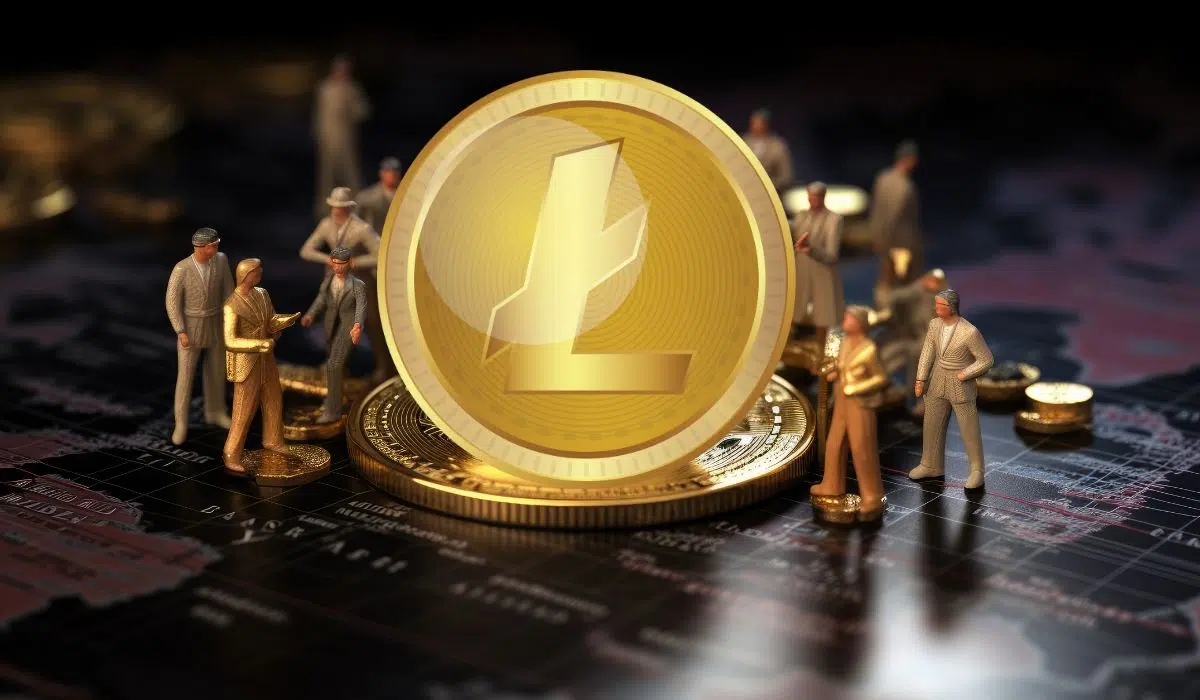Litecoin (LTC) is one of the earliest alternative cryptocurrencies to launch after Bitcoin (LTC). It was founded in 2011 by former Google and Coinbase software engineer Charlie Lee as a slightly modified version of Bitcoin.
The Litecoin blockchain is capable of processing transactions at a faster rate and lower cost than Bitcoin and implements robust security and stability protocols later adopted by the Bitcoin network.
Litecoin is also a proof-of-work (PoW) blockchain, meaning miners are responsible for adding and validating transactions, creating blocks, and ensuring the seamless functioning of the decentralized network. LTC is one of the most mined cryptocurrencies after BTC, with many individual and institutional miners involved in maintaining the blockchain.
If you are interested in mining Litecoin or are already involved in it, this article details everything you need to know about mining. We have also listed the top Litecoin mining hardware for 2025.
What Is Litecoin Mining?
Mining is the technical process of validating transactions before adding them to a blockchain ledger. Decentralized PoW blockchains like Litecoin and Bitcoin operate without being governed by intermediaries like banks or financial institutions. Thus, it is miners who are responsible for verifying and validating Litecoin transactions and preventing unethical practices on the network.
Mining Litecoin involves solving complex mathematical equations known as nonces, which is an energy-intensive process and demands high computational power to validate transactions and create new blocks on the blockchain. For this purpose, miners use specialized computers called Application-Specific Integrated Circuits (ASIC) that are explicitly programmed to handle Litecoin’s Scrypt mining algorithm.

ASICs are capable of producing exceptional hash rates, allowing miners to solve the nonce faster to process transactions and create blocks. Miners are rewarded with freshly minted LTC for their reports. Bear in mind that this is a highly competitive sector as there are millions of miners racing to solve the nonce and the first one to create the block gets the reward.
At the time of writing, the reward for mining a block on the Litecoin network is 6.25 LTC, established during the last halving event in August 2023. Litecoin follows a similar halving schedule to Bitcoin, where the block reward is halved approximately every four years or after every 840,000 blocks mined. The next halving is scheduled around mid-2027 when the block reward will be reduced to 3.125 LTC.
On average, it takes about 2.5 minutes to mine a single Litecoin block, compared to Bitcoin’s 10-minute block confirmation time. However, the time it takes to mine 1 LTC can depend on your mining setup, which we will discuss in the next section.
Litecoin Mining Hardware
Litecoin mining hardware, also known as rigs, function similarly to Bitcoin miners, in the sense they operate with scripts – which are functions that let users utilize their CPU power to mine Litecoin from designated mining pools. Just like other PoW cryptocurrencies, Litecoin has specific parameters, and some rigs are better suited for mining than others.
Let’s take a look at the different types of Litecoin mining hardware available in the market
CPU Mining
CPU mining leverages the CPU of your personal computer to mine Litecoin. While it is the cheapest and most affordable method to step into mining, it also has a major downside, which is that it is extremely slow and often takes a toll on your computer.
CPU mining yields significantly lower returns compared to GPU or ASIC mining, and it may take months or even years to generate profits, making it impractical for most miners. It also consumes considerable amounts of electricity relative to its output, leading to negative profitability.
If you opt to mine Litecoin with a CPU, consider using high-performance processors such as
- Intel Core i7 / i9
- AMD Ryzen 7 / 9
GPU Mining
Mining Litecoin with GPU can yield significantly higher performance and profitability compared to CPUs. This is due to GPUs delivering higher hash rates and energy efficiency. They are also designed to perform complex calculations, making them more suited for mining Litecoin than CPUs.
While GPUs are effective, it is still marred by electricity costs, which play a crucial role in determining profitability as mining consumes substantial power. It is essential to calculate your electricity costs against potential earnings before considering GPU mining. Many GPU miners opt to join Litecoin mining pools to offset the workload involved. It also increases the chances of earning rewards as solo mining with a GPU has become far less profitable with the onset of ASIC miners.
Here are some recommended hardware for GPU mining Litecoin
- NVIDIA RTX 3090
- AMD Radeon RX 580
- NVIDIA GTX 1070
ASIC Mining
ASIC miners are considered the best option for mining Litecoin as they are designed specifically to support the Scrypt algorithm, providing higher hash rates and energy efficiency compared to CPU or GPU mining.
ASIC miners can achieve hash rates ranging between 596 mega hashes (MH/s) and 1.2 giga hashes (GH/s). These rigs can deliver higher profits due to their sheer computational power. It is recommended that individual ASIC miners join a mining pool to increase their chances of earning rewards more consistently.
While it is a lucrative prospect, ASIC mining also has its drawbacks. The initial investment for an ASIC miner can be expensive, plus it consumes significant amounts of electricity. Furthermore, the price of LTC can fluctuate significantly, which affects profitability and the viability of continued mining.
Best Rigs For Mining Litecoin In 2025
Here are the ASIC mining machines that stand out for their performance when it comes to mining Litecoin in 2025:
1. Bitmain Antminer L9
| Release | August 2024 |
| Size | 400 x 195 x 290mm |
| Weight | 14.1 KG |
| Noise Level | 75db |
| Fans | 4 |
| Power | 3360W |
| Input Voltage | 220-288V |
| Interface | Ethernet |
| Temperature | 0-75 degrees |
| Humidity | 10-19% |
2. VolcMiner D1
| Release | November 2024 |
| Size | 400 x 195 x 290mm |
| Weight | 16.5kg |
| Noise Level | 75db |
| Fans | 4 |
| Power | 3900W |
| Interface | Ethernet |
| Temperature | 0-45 degrees |
| Humidity | 10-90% |
3. ElphaPex DG1+
| Release | April 2024 |
| Weight | 18.3 kg |
| Noise Level: 75db | 75db |
| Fans | 4 |
| Power | 3950W |
| Input Voltage | 220-240V |
| Interface | Ethernet |
| Temperature | 5-45 degrees |
| Humidity | 5-95% |
4. Goldshell DG Max
| Release | November 2024 |
| Size | 370 x 305 x 450mm |
| Weight | 13 kg |
| Noise Level | 80db |
| Fans | 4 |
| Power | 3400W |
| Input Voltage | 176-264V |
| Interface | Ethernet |
| Temperature | 0-35 degrees |
| Humidity | 0-65% |
5. Bitmain Antminer L7
| Release | November 2021 |
| Size | 570 x 316 x 430mm |
| Weight | 13.5 kg |
| Noise Level | 75db |
| Fans | 4 |
| Power | 3425W |
| Interface | Ethernet |
| Temperature | 0-40 degrees |
| Humidity | 10-90% |
Conclusion
Mining is integral to the seamless functioning of the Litecoin blockchain. As a decentralized network without governance outreach from banks and other financial institutions, Litecoin allows its users to self-validate transactions and add blocks through mining.
However, before venturing into Litecoin mining, one needs to understand the perks and cons of the process fully. While it is the best way to earn LTC coins, it is expensive and energy-intensive, and profitability depends on your costs. It is recommended that you consider all the aspects of Litecoin mining before making your decision.






